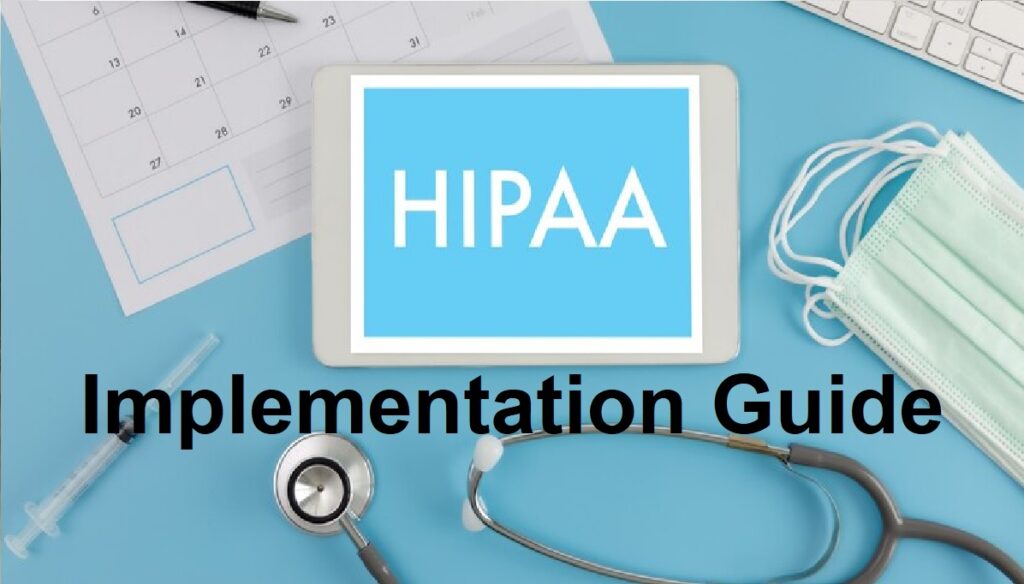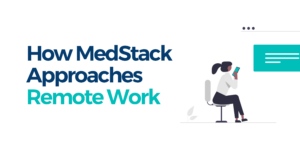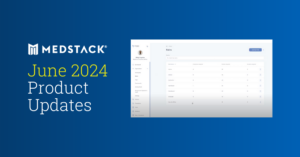The Health Insurance Portability and Accountability Act (HIPAA) establishes rigorous standards to safeguard patient privacy and outlines guidelines for securely handling electronic protected health information (ePHI).
We understand that HIPAA compliance can be overwhelming for healthcare organizations. It’s filled with complex terminology and confusing regulations. This HIPAA implementation guide aims to empower healthcare providers, developers, and digital health innovators like yourself with the knowledge and resources to navigate HIPAA’s intricacies seamlessly.
Key Terms — HIPAA Implementation Guide
Here are key terms related to HIPAA compliance in the digital healthcare landscape.
- Health Insurance Portability and Accountability Act (HIPAA): The federal law enacted in 1996 sets standards for protecting sensitive patient health information in paper and electronic formats.
- Electronic Protected Health Information (ePHI): ePHI refers to any individually identifiable health information created, stored, transmitted, or received electronically.
- Covered entities: Covered entities under HIPAA include healthcare providers, health plans, and healthcare clearinghouses that electronically transmit protected health information for specific transactions.
- Business Associates: A HIPAA business associate refers to an individual or entity that carries out specific functions or activities involving the use or disclosure of protected health information (PHI) on behalf of a covered entity or provides services to a covered entity.
HIPAA Compliance Checklist
To assist you through this process, we’ve prepared a comprehensive HIPAA Compliance Checklist to streamline your efforts. Here’s how you can achieve HIPAA compliance seamlessly:
Guide to Achieving HIPAA Compliance
Achieving HIPAA compliance is not a one-time event but a continuous process of following guidelines and procedures that protect sensitive patient information.
Understand the HIPAA Rules
Understanding the Health Insurance Portability and Accountability Act (HIPAA) is divided into several rules, including the Privacy Rule, Security Rule, and Breach Notification Rule.
- The Privacy Rule covers using and disclosing Protected Health Information (PHI) in healthcare settings.
- The Security Rule establishes a national set of security standards for protecting PHI that is electronically held or transferred.
- The Breach Notification Rule requires covered entities and their business associates to provide notification following a breach of unsecured PHI.
Conduct a Risk Analysis
A thorough HIPAA risk assessment is crucial to identify potential vulnerabilities in your organization’s safeguards for PHI. It should be an ongoing process, continually revisited and updated as your technology and processes evolve.
Development of Policies and Procedures
Your organization’s policies and procedures should be specifically designed to comply with each of HIPAA’s rules.
Create HIPAA Compliant Policies
Develop and implement written privacy policies that align with HIPAA’s Privacy Rule. These policies should clearly outline how PHI is used and disclosed within your organization.
Develop Security Procedures
To comply with the HIPAA Security Rule, you should develop security procedures that protect electronic PHI from unauthorized access, alteration, deletion, and transmission. Your procedures should include both technical and physical safeguards.
Employee Training and Awareness Programs
Training and educating your employees on the principles of HIPAA and PHI is essential to maintaining compliance.
Conduct Regular Training
All employees should regularly train on your organization’s privacy policies and security procedures. This training should be documented and refreshed annually or more frequently if policy changes occur.
Foster a Culture of Compliance
Encourage a culture of compliance within your healthcare organization. Regular meetings and communications help keep HIPAA guidelines and the importance of PHI security front of mind for all staff.
Reward and Recognize Compliance
Recognize and reward staff who demonstrate an excellent understanding and practice of HIPAA compliance. This recognition can motivate other employees to follow suit.
For more information and resources on HIPAA implementation, visit the HHS HIPAA for Professionals Training webpage.
Business Associate Agreements (BAAs)
A Business Associate Agreement (BAA) is a written contract between a covered entity (such as a healthcare provider) and a business associate (any organization or individual that performs activities involving the use or disclosure of protected health information on behalf of or provides services to a covered entity).
A BAA must outline the following:
- How the business associate will use the protected health information.
- Detail the permitted and required uses of such information.
- Require the associate to use appropriate safeguards to prevent the unauthorized use or disclosure of the information.
As part of the HIPAA Act, covered entities must ensure that their business associates comply with the same standards to protect sensitive patient data.
Without BAAs, covered entities expose themselves to potential data breaches and legal penalties.
Here are some general tips for implementing and renewing business associate agreements (BAAs):
- Before entering into an agreement, ensure that the business associate is aware of their obligations under HIPAA and has the necessary systems in place to protect PHI.
- Monitor business associates’ practices regularly using regular reviews and audits.
- BAAs have no expiry date, but you should amend a BAA whenever there is a significant change in the services provided by the business associate or in regulations.
HIPAA Enforcement and Penalties
Non-compliance with HIPAA regulations can lead to substantial penalties for covered entities and business associates.
The Office for Civil Rights (OCR) investigates complaints filed with it, conducts compliance reviews to determine if covered entities comply, and performs education and outreach to foster compliance with the rules.
If the investigation reveals non-compliance, the OCR will attempt to resolve the case by obtaining voluntary compliance, corrective action, or a resolution agreement.
Civil Penalties
Civil penalties are monetary fines imposed by the HHS. The fines are categorized into four tiers, with the amount depending on the level of “willful neglect” and whether the violation was promptly corrected.
For violations where the entity had no knowledge and, by exercising reasonable diligence, would not have known of the violation:
- Minimum penalty per violation is $100
- Maximum penalty per violation is $50,000
- Annual cap for such violations is $25,000
Violations due to reasonable cause and not willful neglect:
- Minimum penalty per violation is $1,000
- Maximum penalty per violation is $50,000
- Annual cap for such violations is $100,000
For violations due to willful neglect that were timely corrected:
- Minimum penalty per violation is $10,000
- Maximum penalty per violation is $50,000
- Annual cap for such violations is $250,000
For violations due to willful neglect that was not timely corrected:
- Minimum penalty per violation is $50,000
- Maximum penalty per violation remains at $50,000
- Annual cap for such violations dramatically increases to $1,500,000
Criminal Penalties
Criminal penalties are enforced when knowingly wrongful disclosures of PHI occur. Violations can lead to significant consequences, such as hefty fines of up to $250,000 and a maximum prison sentence of 10 years.
HIPAA Compliance in the Digital Age
The advent of digital technology has revolutionized the healthcare industry. However, its ease and efficiency also present new challenges for HIPAA compliance.
For example, Electronic Health Records (EHRs) have largely replaced traditional paper records. While EHRs streamline the handling of patient data, they also create avenues for potential security breaches.
Telemedicine has also grown significantly, especially due to global health concerns such as the COVID-19 pandemic. As healthcare services are increasingly delivered remotely, HIPAA compliance must adapt.
Companies should Implement Mobile Device Management (MDM) to remain HIPAA-compliant.
With MedStack, you can streamline your HIPAA compliance efforts and focus on delivering exceptional care while ensuring the security and privacy of patient information.
Ongoing HIPAA Compliance and Audits
HIPAA rules and regulations are dynamic and subject to change. Keeping up with these changes and maintaining ongoing compliance is essential to protect patient information and avoid penalties.
Audits are an essential part of maintaining HIPAA compliance. They identify any areas of non-compliance and provide a roadmap for corrective actions for healthcare organizations.
For audits, you must provide your auditors with documentation for the past six years. The submission must include all documentation.
All actions, activities, and assessments related to HIPAA compliance must be documented. It includes but is not limited to:
- Notice of Privacy Practices
- Consent forms
- Business associate agreements
- Risk assessments
- Training records
- Policies and procedures.
Conclusion
Ultimately, HIPAA compliance’s objective is not just to meet legal requirements but to protect patients’ information and build trust.
HIPAA compliance is an ongoing process, from understanding key terms and rules to conducting risk assessments, developing policies and procedures, and fostering a culture of compliance.
MedStack’s HIPAA Compliance Software for Digital Healthcare can be your trusted partner in simplifying the compliance journey, providing a platform with built-in security and provable compliance.
Skip the hiring process and leverage the power of MedStack to automate compliance, provide built-in security, and streamline your journey toward meeting HIPAA requirements.





